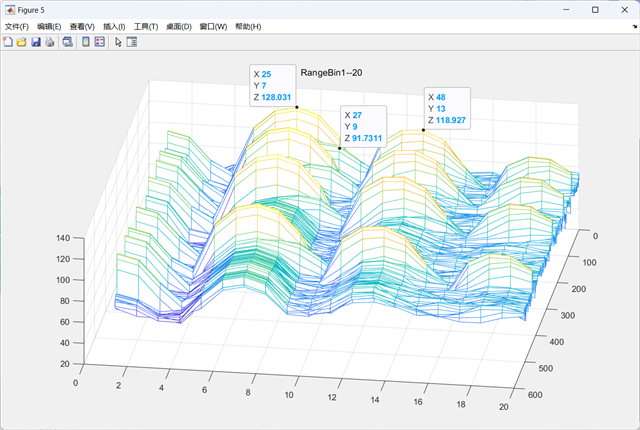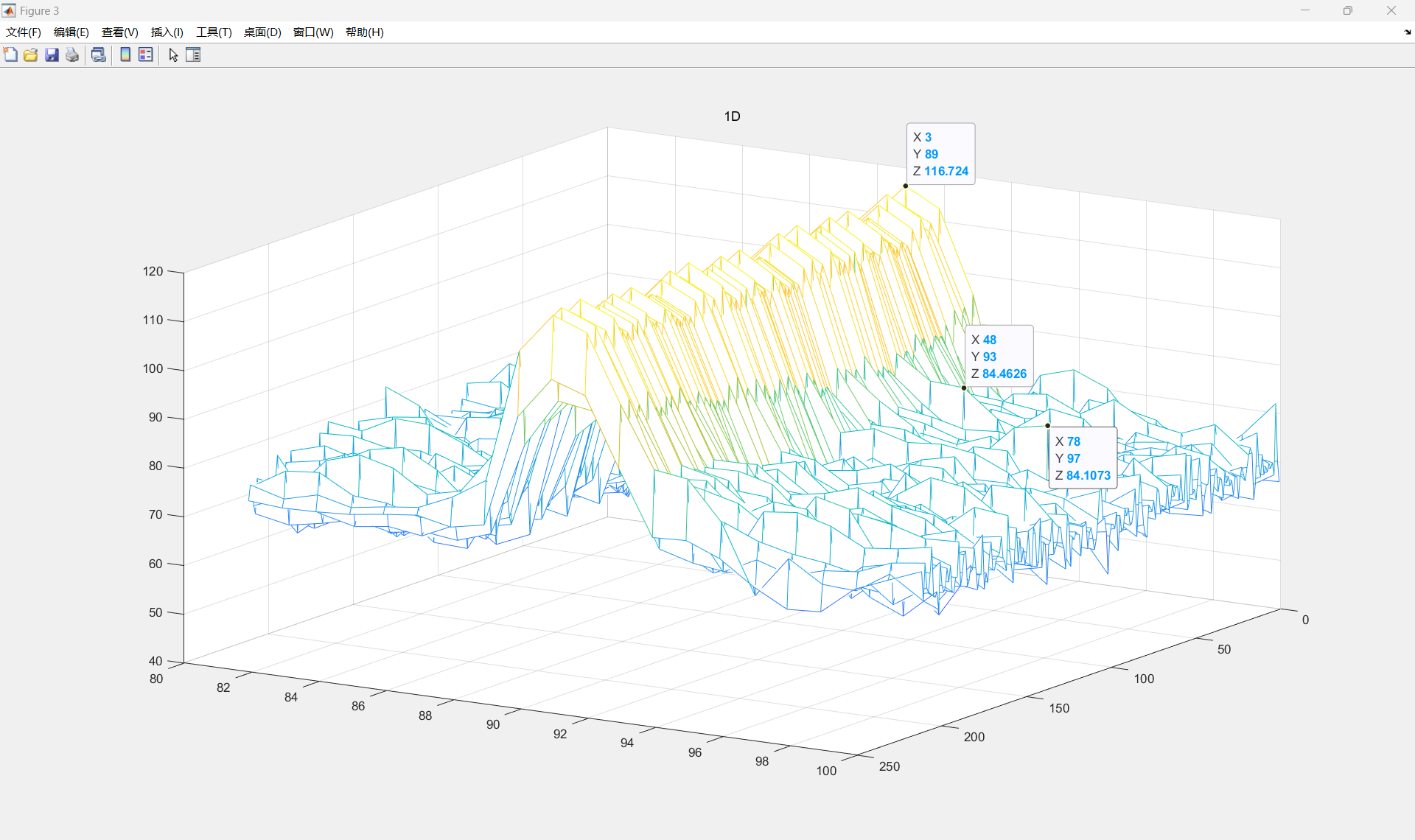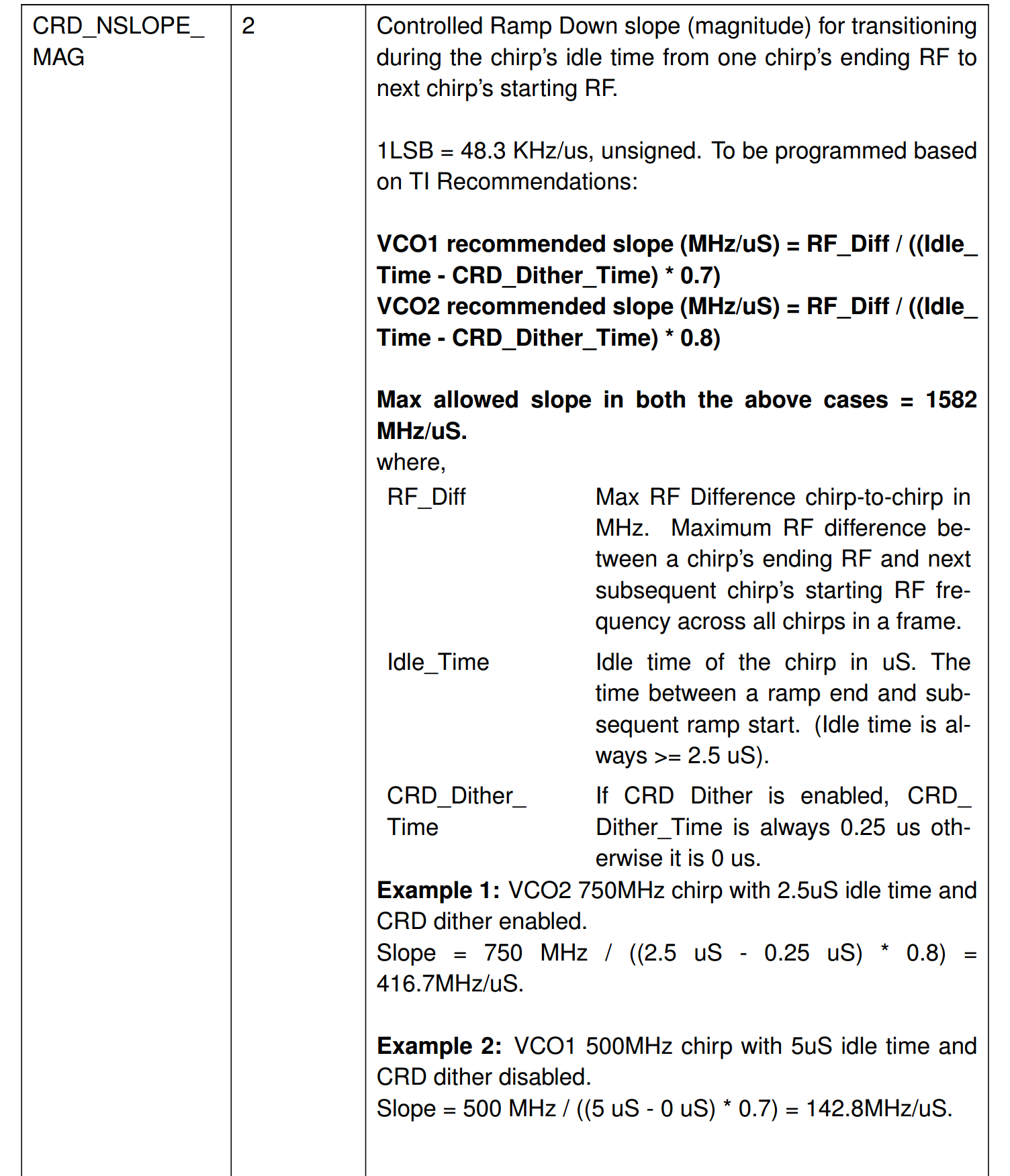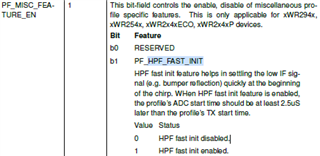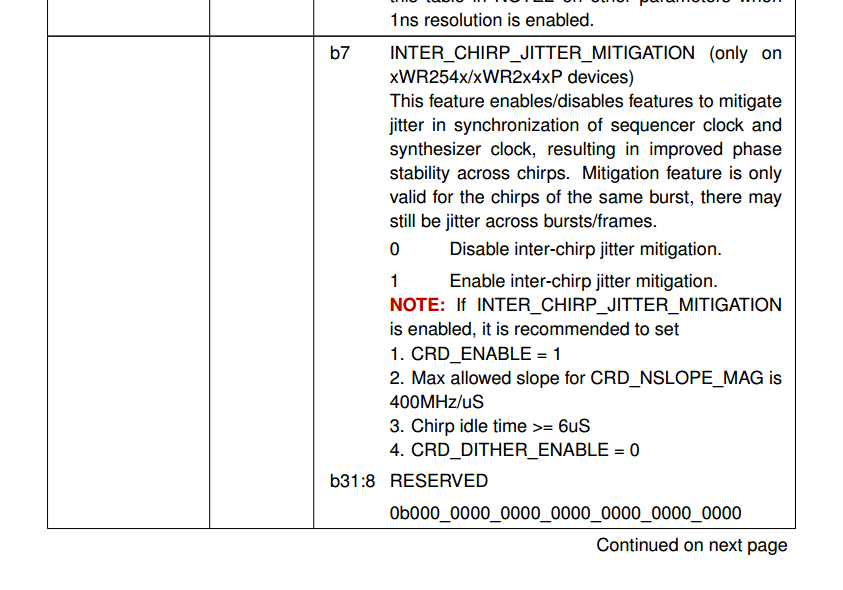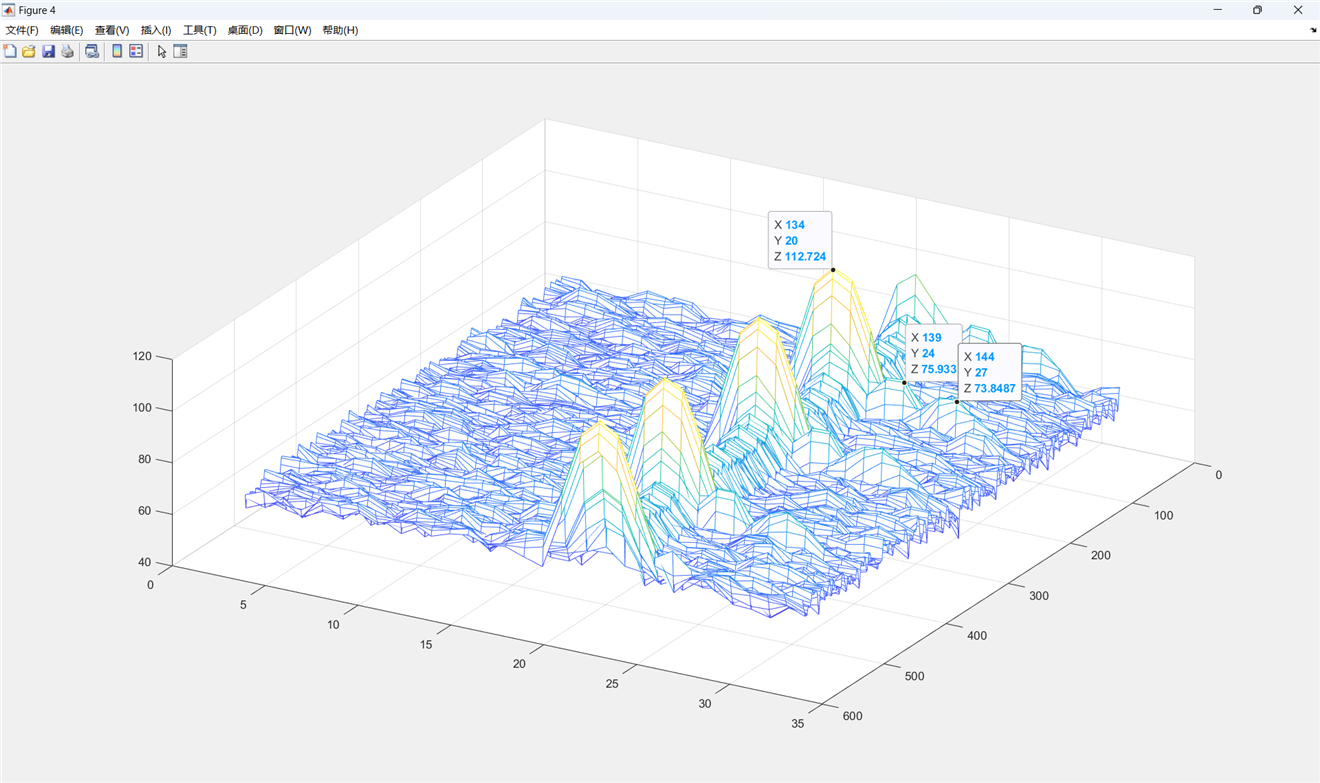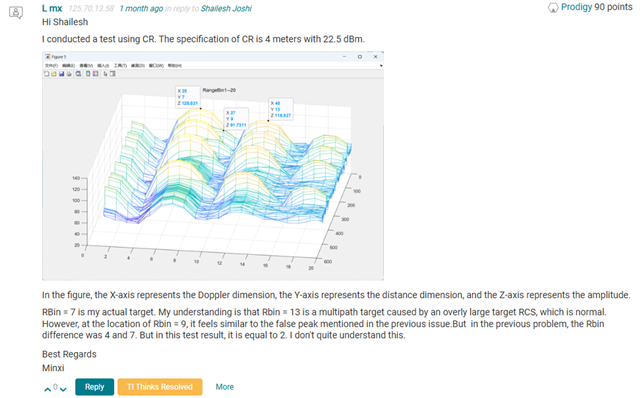Tool/software:
Hi TI teams:
In the recent test, I discovered a problem existing in the spectrum,I used RTS to create a target of 30m-30dBsm-0Kph,This target can be correctly observed in the 2D spectrum
However, there will be false peaks at the 4th and 7th bins after this target peak,Even if the waveform configuration is changed and the scale of the RangeBin is adjusted, problems still occur at the 4th and 7th bins
eg:
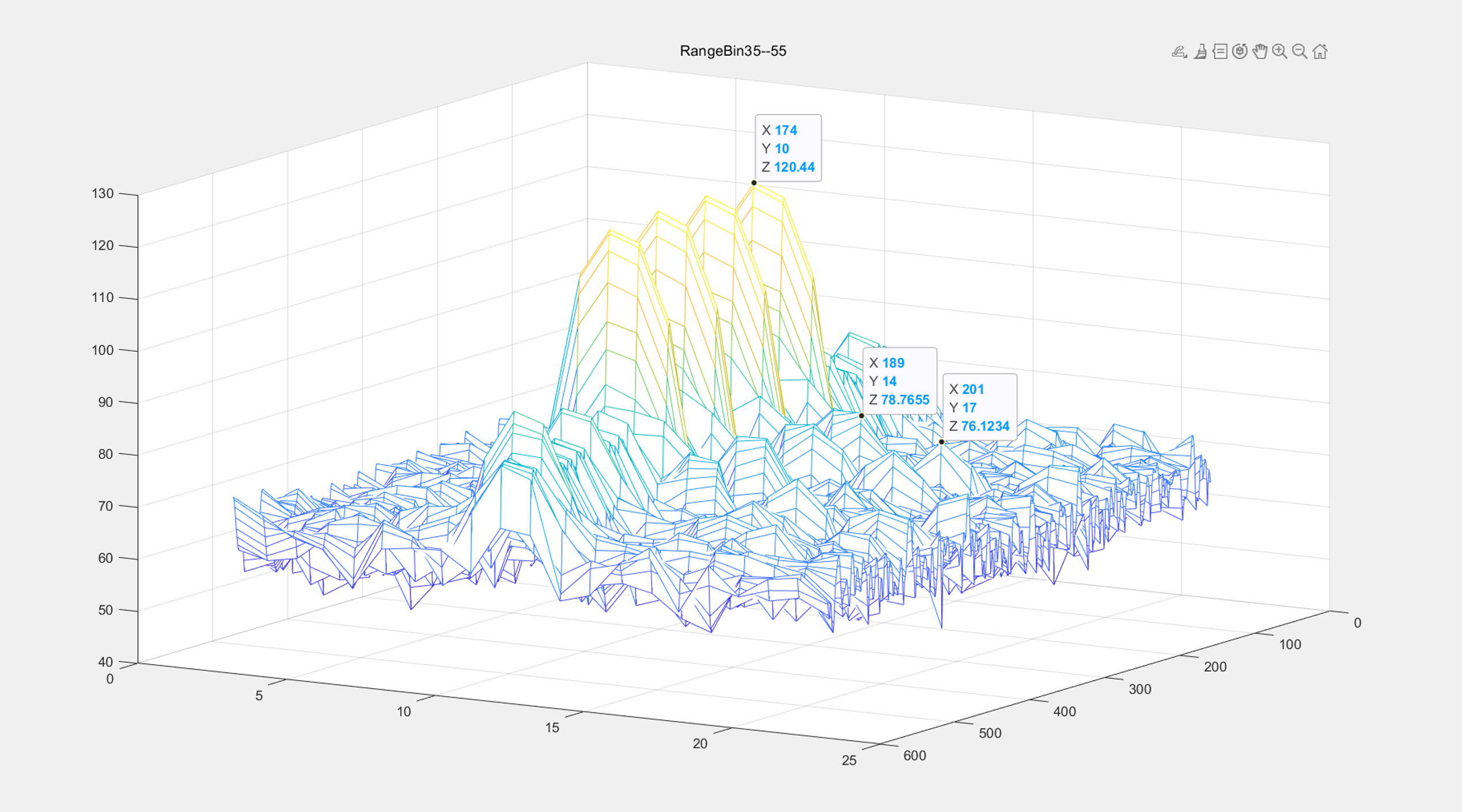
The first waveform :The drawing coverage range is 35-55 bins(so the actual Bin is 45),There are false peaks at locations 14 and 17
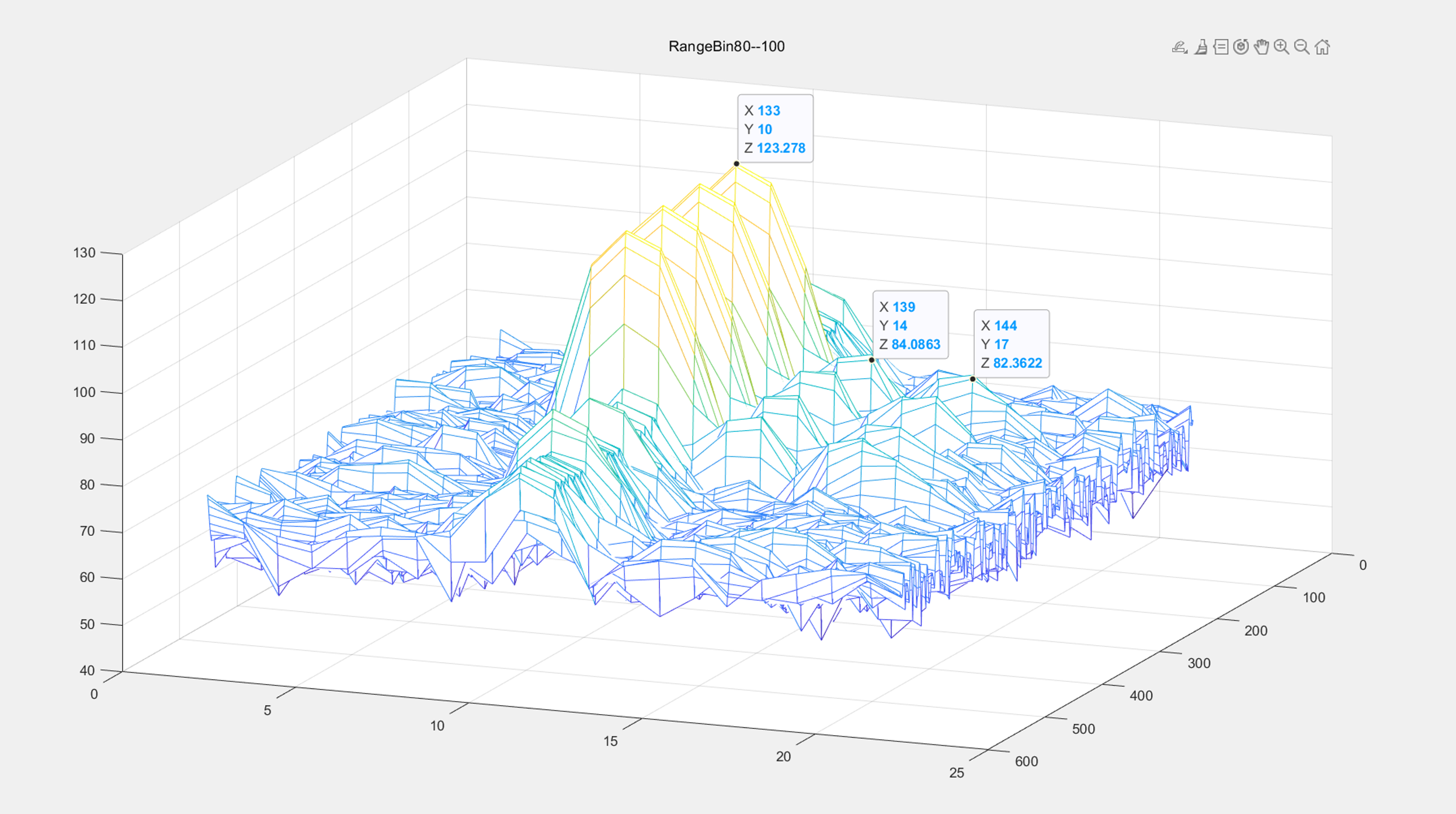
The second waveform :The drawing coverage range is 80-100 bins(so the actual Bin is 90),There are false peaks also at locations 14 and 17
Regarding the above situation, In my understanding, if these two targets really exist in the environment, then as the slope of my waveform changes, their differences should also change together, rather than being fixed at 4 and 7 differences from the real targets.
This situation can be reproduced by using TI2944EVM and OOB-Demo, and by using adv-chirp-adv-frame for Profile.
From what aspects can I analyze this problem? Thank you!






